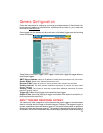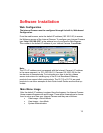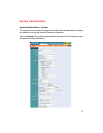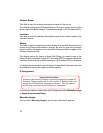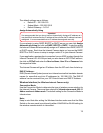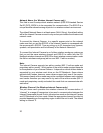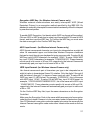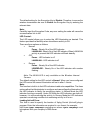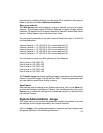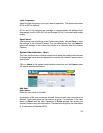20
Note:
The Internet Camera supports two ad-hoc modes (802.11 ad-hoc mode and
proprietary ad-hoc mode). Which option of the ad-hoc mode required depends
on the operation of your Internet Camera. It depends on which ad-hoc mode is
supported by your wireless card driver on the PC/Notebook. Some drivers
supports both modes, however, some drivers support only one of the modes.
The names of each ad-hoc mode may not be consistent between each wireless
card vendor therefore you may need to try each of the ad-hoc modes (802.11
mode and proprietary mode) and select the mode that can communicate with
each other.
Wireless Channel: (for Wireless Internet Camera only)
The pull down menu provides the wireless channel for communication. A
“channel” is a range of frequencies to be used in communication between the
Internet Camera and Access Point in infrastructure mode or the Internet Camera
and PC/Notebook in Ad-hoc mode. Select the appropriate channel from the list
provided depending on the regulatory region in which the unit is sold. The default
setting is channel 11.
The default Network Name is a blank space (NULL String); this default setting
will let the Internet Camera connect to any access point under the infrastructure
network mode.
To connect the Internet Camera to a specific access point on the network
make sure that you set the ESS-ID of the Internet Camera to correspond with
the access point’s ESS-ID. Type any string up to 32 characters long (spaces,
symbols, and punctuation are not allowed) in the Network Name box.
To connect the Internet Camera to an Ad-hoc wireless workgroup make sure
that you set the same wireless channel and ESS-ID to match with the PC/
Notebook wireless channel and ESS-ID for direct wireless communication under
the Ad-hoc wireless workgroup (ad-hoc and 802.11 ad-hoc modes).
Network Name: (for Wireless Internet Camera only)
This field is used to setup which wireless network (ESS-ID Extended Service
Set ID) DCS-1000W is to be connected for communication. The ESS-ID is a
unique identifier shared among all points in a wireless network environment.




